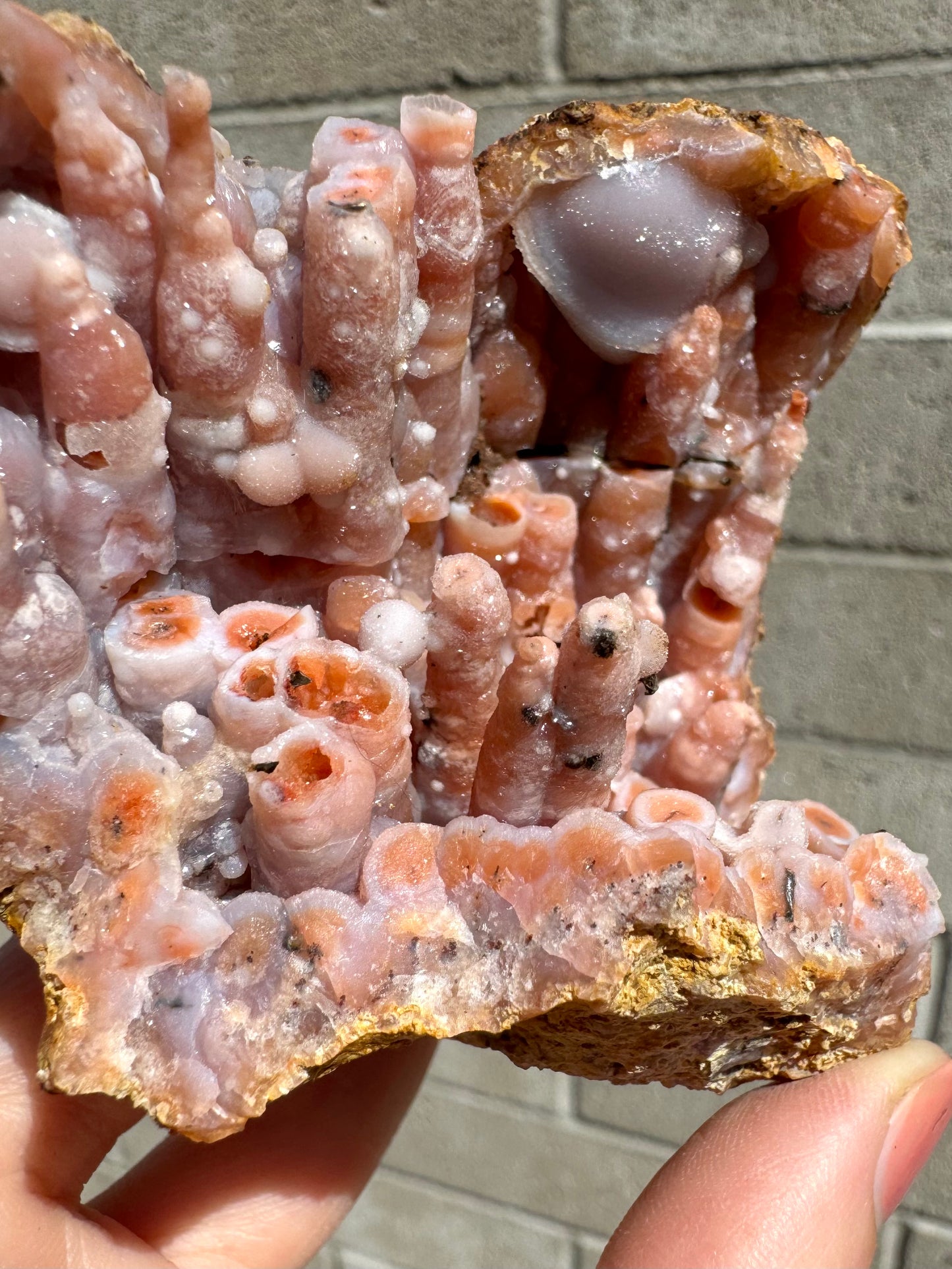Stalactitic chalcedony geode piece (repaired)
Stalactitic chalcedony geode piece (repaired)
Couldn't load pickup availability
Locale: Atlas Mountains, Morocco
Approx dimensions: 3 x 2.5 x 1.5"
Approx weight: 178g
**Repaired specimen
These unusual geodes from Morocco are like small caves lined with stalactites, botryoidal forms, and swirling agate patterns. While commonly called red chalcedony, I find the color is more orange to red-orange. Hematite causes this coloration, but later phases of growth (“second generation”) don’t contain hematite inclusions. This creates a colorless-to-white growth over the orange chalcedony, which can produce a soft orange-cream druzy coating, or bold Halloween patterns of orange and white stripey stalactites.
This piece of a geode has fat, rounded stalactites with sugary fibrous parallel-growth quartz coating the surface. Spheres of white quartz sprinkle the surface, and there is a large amorphous blob of white radial-growth quartz in the upper right corner. Since chalcedony and quartz are closely related you often see them grow together. They have the same chemical composition (silica) but different crystal structure (cryptocrystalline vs. crystalline).
Where stalactites have broken you can see a pinpoint of a dark, metallic, mineral at the core, surrounded by orange chalcedony, then translucent white chalcedony. The broken ends of stalactites reveal a curiosity: some are hollow, apparently dissolved away. Another is tipped with metallic radial growth.
This specimen has been inexpertly repaired from at least three pieces. The pieces were not reset evenly so cracks may be offset or have wide gaps in places. Dirt was used to "hide" visible glue in the crack near the center of the specimen (you can see the impressions where bubbles have burst from the glue in picture 8).
Repaired: This specimen has been repaired, meaning it broke but someone recompiled and glued it back together. These Moroccan geodes are frequently recompiled and glued together—but this is infrequently disclosed :( Read more about how to detect repairs.
I don't know how often breaks occur due to rough techniques in mining or cracking the geodes open, but I suspect many of the breaks are natural based on how few intact pieces I have ever seen. I have observed many of these geodes have a fairly thin, brittle crust which may make them susceptible to fracturing as part of normal geological processes. I have also seen examples where it appeared iron staining had leaked through the breaks, indicating the cracks occurred well before the specimen was mined.
























